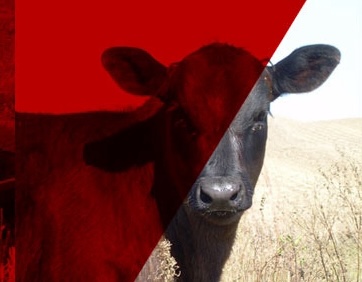Zinc (Zn) is involved in nearly every biological process, including immune function, growth, and reproduction. The wide-ranging function of Zn makes it important for overall cowherd productivity, but along with copper, is one of the most observed trace mineral deficiencies. In this article, practical considerations for Zn nutrition will be discussed, including deficiency, forage Zn content, and meeting the cow’s Zn requirement.
Important considerations for Zn supplementation in the cowherd:
- Cow/calf (30 ppm required in diet on DM basis)
- Target 2000-3000 ppm in 4 oz intake mineral
- Inclusion dependent on forage Zn content and level of insurance desired
- NE forages typically have inadequate Zn content to meet requirement
- Forage maturity may affect Zn availability for absorption
- Zinc is poorly stored, so constant access should be given to free choice mineral
Zinc and the Cowherd
Marginal zinc deficiency can cause nonspecific and difficult to detect issues such as reduced calf growth, poor reproductive outcomes, and suppressed immune function. The best way to ensure that marginal zinc deficiency does not affect cowherd performance is proper supplementation. In pasture and hay samples sent to a commercial lab by Nebraska by producers, 80% of samples were less than the required 30 ppm, and 50% of samples fell between 15 and 25 ppm. It is estimated only 50% of the forages’ Zn is available to the animal, making supplementation crucial. In a grazing scenario with fair to good quality forages, a loose mineral designed for 4 oz of daily intake should provide roughly 50% of the Zn requirement, equating to roughly 2000-3000 ppm.
Factors Affecting Zinc Supplementation
If cows are consuming poorer quality forages with greater maturity, the higher end of the range should be targeted, around 3000 ppm. In mid- to late-gestation when cows are on residue fields or dormant grasses, Zn supplementation is especially important. For the fetal calf, Zn status at birth is largely determined by Zn acquired through placental transfer. Once born, the calf will only acquire a small amount of Zn from the milk it consumes, so until the calf begins consuming enough loose mineral to meet its requirements, Zn stores obtained in gestation are its primary supply. Therefore, diligence in checking and maintaining adequate levels of free choice mineral should be practiced with the future calf in mind.
Beyond fetal development, consistent Zn supplementation is also critical due to cattle’s limited ability to store Zn. Because cattle regulate Zn absorption and excretion tightly, they do not store it efficiently. Liver Zn concentration is not particularly responsive to differences in Zn supplementation. Even when cattle receive different Zn supplementation levels, liver Zn concentrations may not vary significantly due to tight homeostatic regulation. In this, assessing Zn status of cattle is difficult, and reliable biomarkers have not yet been discovered in research.
Conclusion
While research in growing and finishing cattle indicates supplementing above the requirement may benefit lean tissue growth, the mature cow is not exhibiting the same extent of protein synthesis that is underscoring the benefit of additional Zn. Therefore, the current requirement of 30 ppm still represents the target for the cowherd. Future discussions will address Zn recommendations for feedlot cattle based on stressors, implants, and beta-agonists. Ultimately, ensuring adequate and consistent Zn supplementation is essential for maintaining optimal cowherd health, reproduction, and performance.
For a more comprehensive review of mineral and vitamin supplementation strategies for the cowherd, visit: Formulation Considerations for Mineral and Vitamin Supplements for Beef Cows.
Article by Brock Ortner, Nebraska Extension Educator; Mary Drewnoski, Nebraska Extension Beef-Systems Specialist.

